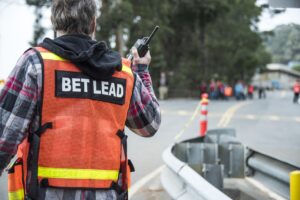Global Pandemic, Hybrid Work, and Other Challenges
Building Emergency Teams, or BETs, have been a tremendous asset to the safety and emergency preparedness of Lawrence Berkeley National Laboratory.

However, the global COVID-19 pandemic brought a lot of unprecedented challenges to our Laboratory. Previously buildings may have had a BET Lead and BET members to help guide people to evacuate in an emergency; but now those people might be working remotely or on a hybrid schedule (or out sick for extended periods). Some buildings did not have any BET volunteers.
As The Way we Work has brought great benefits to business continuity and made the Lab more accessible, it has also introduced challenges in relying on an in-person institutional knowledge for critical safety roles.
Progress We’ve Made
In November 2021, Security & Emergency Services Division stood up the Critical Incident Management Group (CIMG). The CIMG is a trained and qualified incident management team using National Incident Management System standards. Led by an Incident Commander with overall authority, the CIMG is on call 24/7 to respond to incidents, emergencies, continuity events, and some planned events at the Lab. The formation of this team was one big step forward in safely managing incidents at the Laboratory.
We have also integrated mass notification (LabAlert) to issue protective actions (evacuate, shelter-in-place, or lockdown) and conduct personnel accountability, and drill this capability at least quarterly.
The Way Forward
In December of 2023, the Emergency Management team held Town Halls to discuss our path forward and the
decommissioning of BETs. The BET concept is being evolved into the Community Preparedness Framework (CPF), and the term BET is being removed from SES related training, policy and plans.
Now, we want to reinforce that all site workers will be accountable for understanding and following protective actions issued by the CIMG. All personnel should:
- Report issues to the SOC and emergencies to 911. The SOC is in direct contact with the CIMG Incident Commander, so this ensures that the CIMG is notified and activated when necessary. See notify.lbl.gov for more information.
- Ensure your LabAlert profile is updated and includes personal contact information. You can review and update your profile at go.lbl.gov/labalert, and also change the order that LabAlert contacts you (i.e. personal text first).
- Follow alarms, LabAlerts, and other directions from first responders. Always evacuate for a fire alarm. Go to the nearest, safest Evacuation Assembly Area (EAA) until a first responder okays the building for reentry.
We are also working on the following for FY25: updating evacuation assembly areas, site online emergency training, and the emergency guide.
If you have any questions about emergency preparedness or CPF, please email emergencymanagement@lbl.gov or join our monthly Open Office Hours.

